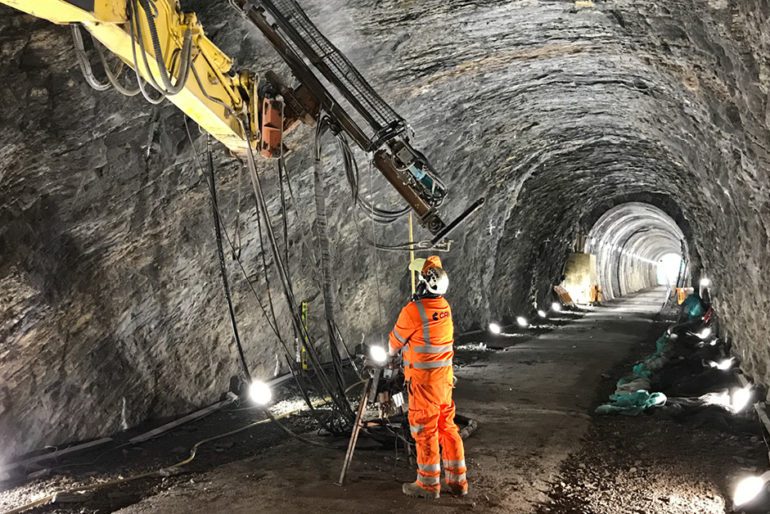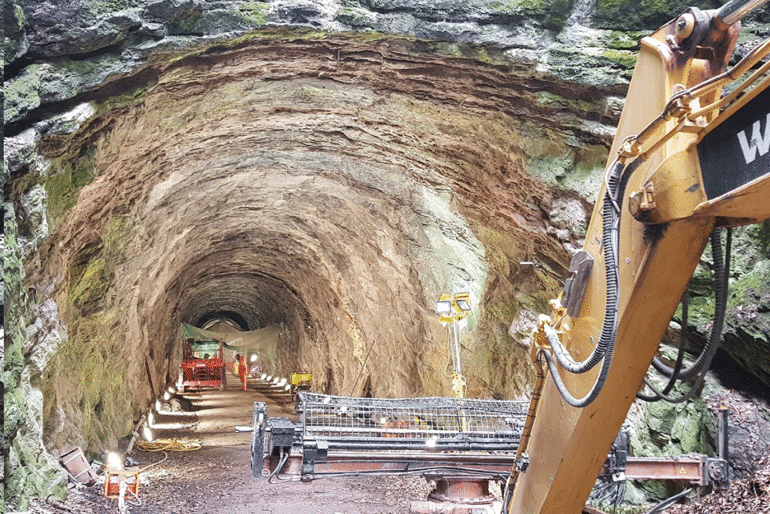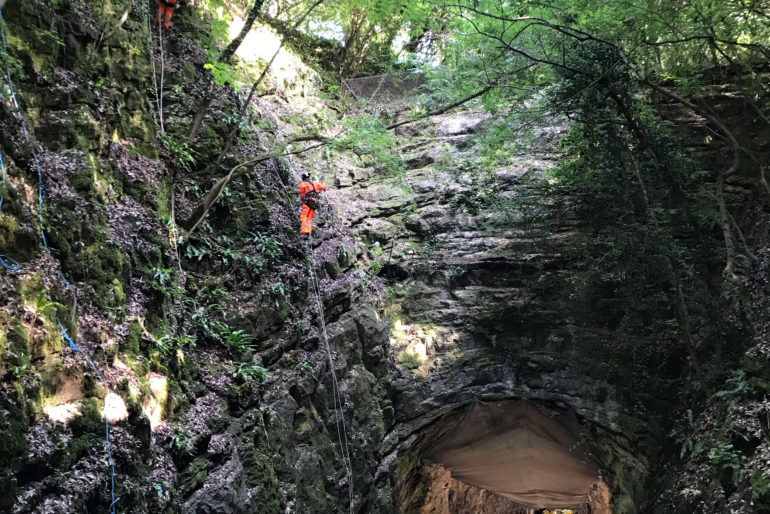Stabilisation of the historical Shute Shelve Tunnel to protect workers installing a new water line and future walkers and cyclists using the Strawberry Line, which is part of the Sustrans Network.
Shute Shelve Tunnel is on the eight-mile heritage trail popular with walkers and cyclists, which is part of the National Cycle Network. Kier Group are working for Bristol Water, to install a new water main between Bristol and Cheddar and Shute Shelve Tunnel was selected as the optimum route as it avoids damage to the Mendip Limestone escarpment.
Jubb provided specialist design for CAN Geotechnical, who were appointed by the Principal Contractor, Kier Group on behalf of Bristol Water. Shute Shelve Tunnel is owned by North Somerset Council who are responsible for its inspection and maintenance.
Jubb were appointed by CAN Geotechnical to undertake an inspection of the historic rail tunnel and steep Limestone rock cuttings formed through the Mendip Hills Area of Outstanding Natural Beauty (ANOB) in North Somerset. Following completion of the tunnel and rock cutting inspection, Jubb went on to design rock face stabilisation and rockfall containment measures to protect workers and members of the public.
 1 / 3
1 / 3 2 / 3
2 / 3 3 / 3
3 / 3
Jubb’s design included a rockfall containment meshing and radial rock bolt system to a 70m length section of unlined the tunnel crown, dentition work to the North tunnel portal area and a bespoke, flexible rockfall containment barrier to the South tunnel portal. We worked in close collaboration with CAN and Kier to access the various work areas in this challenging location. Rock scaling and vegetation management to the South approach rock cuttings was specified to reduce the risk of rock falls, in line with the North Somerset Council’s (NSCC) asset management strategy.
Jubb’s expert geo-hazard capability includes the investigation, assessment and design of rock and soil slope stabilisation and protection measures. Conservation vegetation management was specified to the cuttings, working in collaboration with NSCC’s open spaces team, including coppicing of broadleaf saplings.
A bespoke design solution for the southern tunnel portal rockfall containment barrier was used, as the steep opposing rock cutting flank walls constrained access. We use the opposing cutting faces for the installation of rock bolts, which removed the need for a number of barrier posts and heavy lifting. Head of Ground Engineering, Mark Campbell lives only a few miles away from the tunnel and had previously undertaken voluntary work on the strawberry line, close to the northern tunnel portal. Mark also volunteers with the Woodland Trust in the Mendip Hills and his knowledge of sustainable, woodland management techniques was draw upon here, to ensure that the coppicing work was sympathetic to the environment. Coppicing allows trees to regrow with a number of smaller diameter trunks that pose a much lower risk of damage to the rock faces which can be more easily managed again in the future. Coppicing is a traditional management technique used to manage the woodlands of the Limestone Mendip hills.

